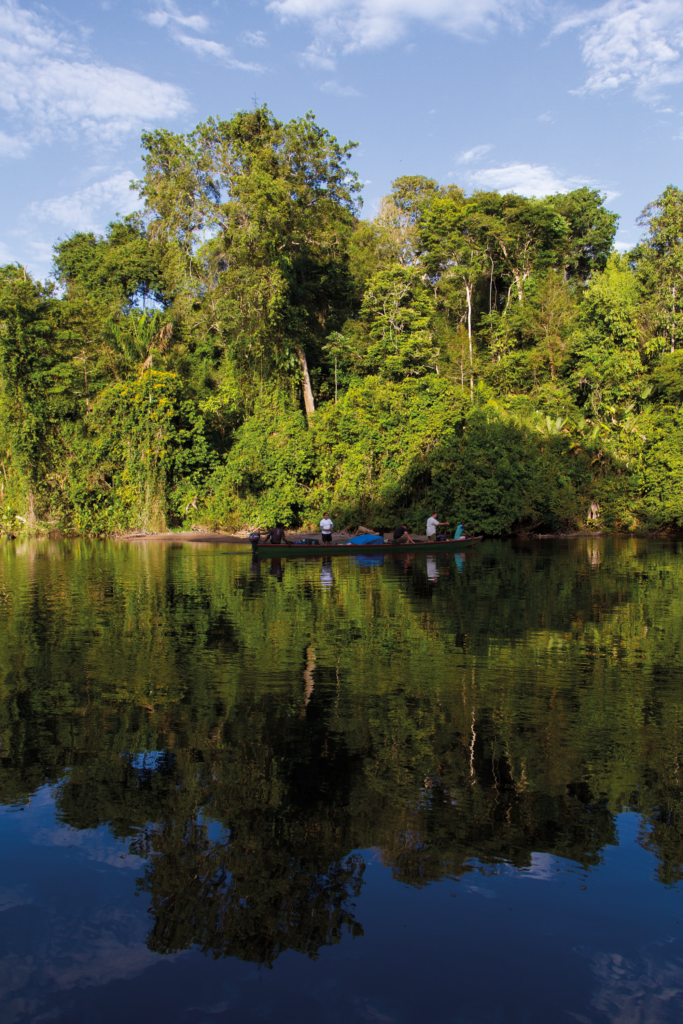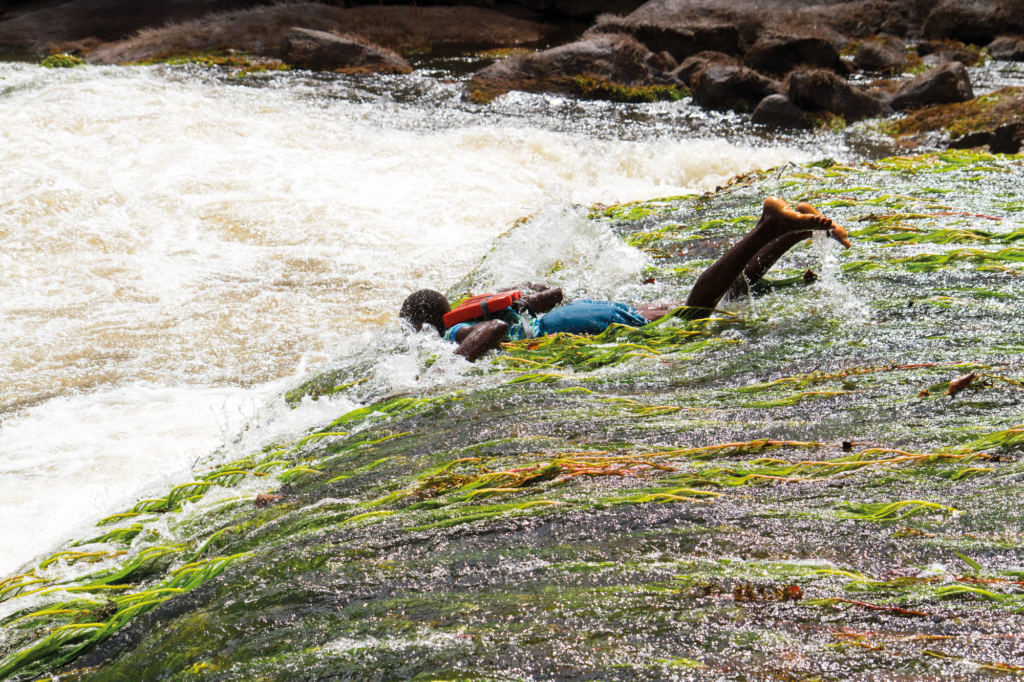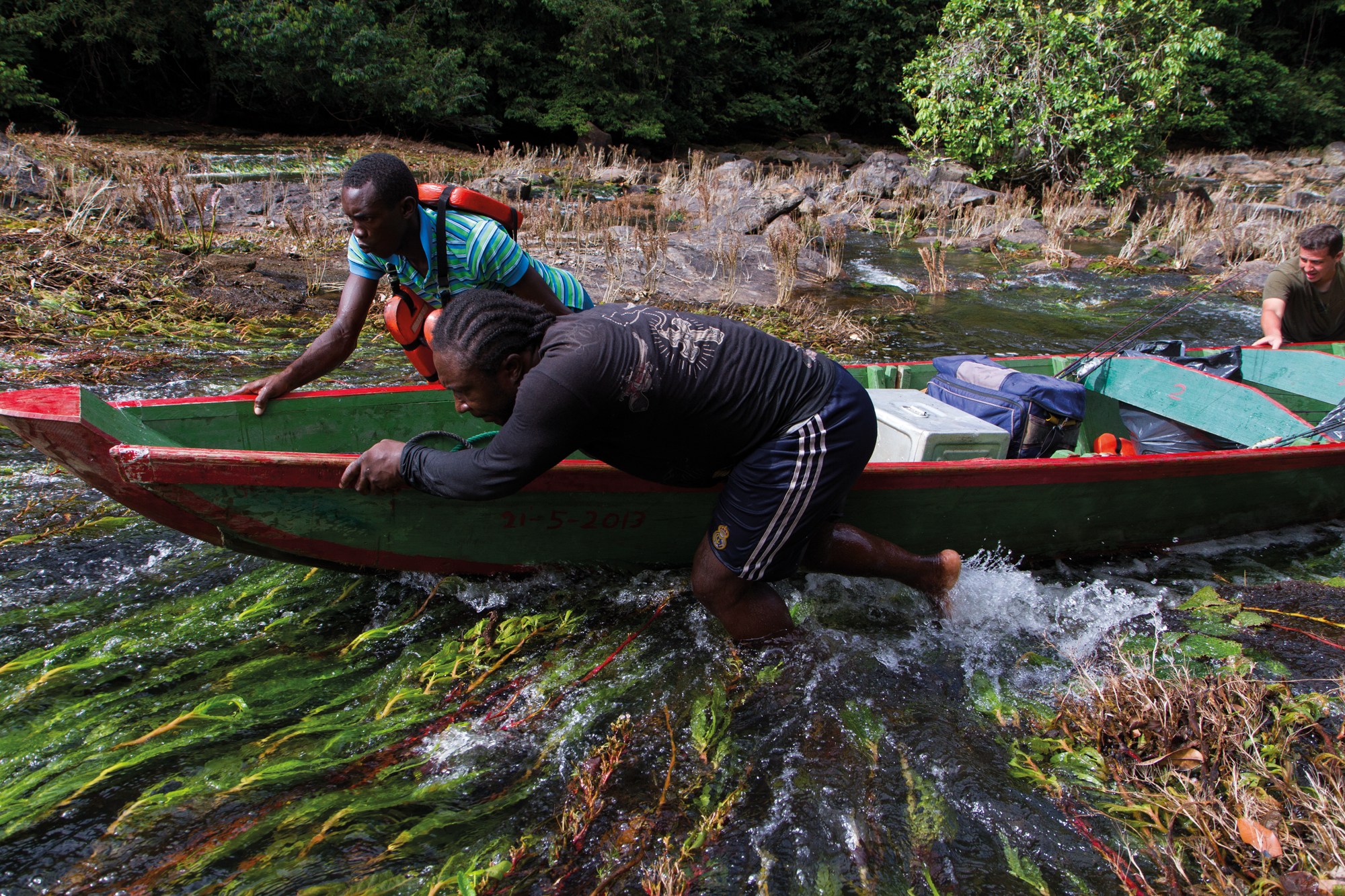Gran Rio
: Rafael Jantz
: Popular Places Magazine edition 1
Suriname has one of the few maroon populations in the Western Hemisphere, apart from a very tiny population in the mountains of Jamaica, and a few other countries in the region. In Suriname a lot of the West African traditions remain preserved even after these centuries.
The Gran Rio is the main tributary of the Suriname River and it runs from the northern hills of the Eilerts de Haan Mountain range running north to consolidate its flow with its smaller sister the Pikin Rio (little River), and further continuing north as the Suriname River. Buzz away by airplane from town and after about an hour flying over jungle and river, you’ll arrive at one of the larger villages which are blessed with an airstrip.
There are many additional tiny villages in this picturesque part of the Suriname’s interior. This famous upper part of the Suriname River is home to Saramaccan Maroons, the largest tribe of descendants of runaway slaves in the country. In colonial times they established many villages along this part of the interior, staying just beyond the reach of soldiers who couldn’t traverse the rapids in the river, and now calling it home for the last 300 years. The Saramaccans are an energetic and fun loving people, quite worthy of a visit. The villages in this area are often serviced by airplane and offer quite fun possibilities for those seeking adventure in the midst of the Surinamese jungle.

The river offers beautiful landscapes and an abundance of rapids which can be a challenge for the most avid of travelers. Friendly villagers will proudly show you around the area and are most welcoming to visitors. Tourist lodges in the area offer a full range of activities and accommodations aiming to please a wide assortment of travelers ranging from the backpackers to those who want it all. Trips to the area can vary from 1 day visits to trips lasting 3 to 4 days or longer. Most activities are river based since the Saramaccan are a real river people, more than they are a jungle people. The area offers activities such as bush trails, swimming, boating, animal spotting, jungle villages, fishing and hiking. Traveling around the area in a wooden locally made dugout canoe (korjaal) is sure to add to the experience of a trip to this lovely Gran Rio area.



